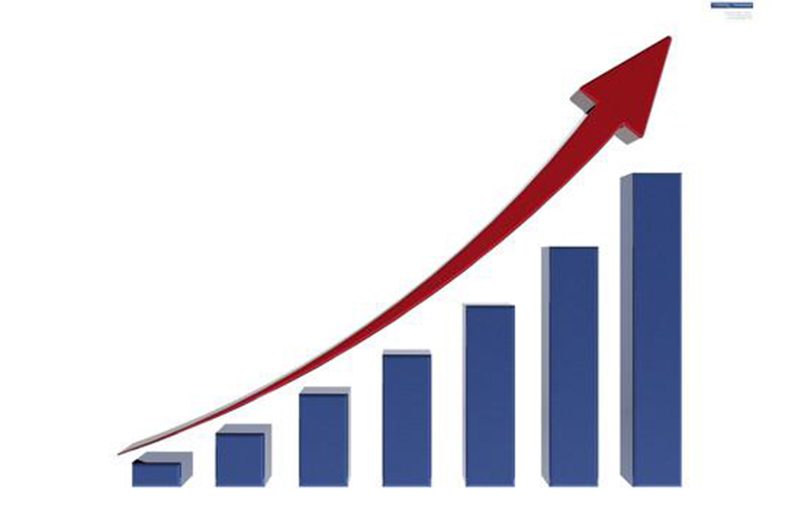–on account of continued production in oil and gas sector, positive output performances in non-oil sectors
–significant growth expected at the end of the year with projected expansions in major sectors, BoG says
THE first quarter of 2022 was a productive period for Guyana’s economy, which recorded positive economic growth on account of sustained production in the oil and gas sector, and positive output performances in the non-oil sectors.
“As oil and gas activities continued, the non-oil economy experienced moderate growth on account of economic activities regaining momentum from the full reopening of the economy, coupled with fiscal measures to alleviate the rising costs of production and services,” the Bank of Guyana reported in its quarterly update which was published recently.
The resilience of the country’s economy is being demonstrated as the nation continues to progress despite grappling with the effects of the COVID-19 pandemic, and, more recently, Russia’s invasion of Ukraine.
“Our economy is becoming stronger; it is rebounding from the two-year-long effects of the coronavirus pandemic. Businesses, both local and foreign, are capitalising on the unfolding opportunities and, in the process, generating jobs and providing incomes for our citizens,” President, Dr. Irfaan Ali had said.
Based on Budget 2022– the country’s largest to date — the government intends to enhance its approach to stimulating growth in various economic sectors.
According to the Central Bank, in the agriculture sector, forestry activities grew significantly by 79.3 per cent on account of increased output of total logs by 90.1 per cent. This favourable increase is partly due to small-scale loggers returning to their operations along with the removal of all COVID-19 restrictions.
Conversely, there were decreases in the production of rice and sugar by 53.1 per cent and 47.7 per cent, respectively, the Bank of Guyana said.
The financial institution, however, explained that this substantial decrease in the production of rice could be attributed to the effects of flooding in 2021, which prevented farmers from sowing all available lands for the first crop of 2022, along with higher input costs.
As for the sugar industry, production, according to Central Bank, decreased as a result of the halt on grinding at the Uitvlugt sugar estate, caused by mechanical issues, which impacted production, as that estate was responsible for 25 per cent of output.
On a more positive note, the mining and quarrying sector experienced growth in most industries, except for a marginal decrease in oil.
Total bauxite production increased by 6.4 per cent, while gold declarations were higher by 3.0 per cent. The latter resulted from a 30.5 per cent increase in declarations by large scale miner, Guyana Gold Fields Inc.
Crude oil production, however, registered a marginal decrease of one per cent, despite the start-up of production on the Liza Unity floating production storage and offloading (FPSO) vessel in February, as the Liza Destiny FPSO paused production due to planned maintenance during March.
Based on the Bank of Guyana report, crude oil production totalled 10.9 million barrels at the end of March 2022 compared to 11 million barrels for the corresponding period one year earlier.
Meanwhile, the manufacturing sector registered increased production of tablets by 75.1 per cent, detergent by 65.8 per cent, total aerated drinks by 13.7 per cent and rum by a marginal 1.0 per cent.
In contrast, according to Central Bank, there were declines in production of oxygen by 32.3 per cent, total liquids by 17.1 per cent, putty by 13.0 per cent, paint by 7.5 per cent, and alcoholic beverages by 1.3 per cent.
Performance in the services sector improved in the areas of wholesale and retail trade and repairs, financial and insurance activities, accommodation and food services as well as entertainment and recreation.
Also on the positive side, construction activities increased in both the public and private sectors with the building of infrastructure by the government as well as home building by citizens. There was also a notable increase in the output of sand and crushed stoned due to enhanced construction activities across the country.
ON COURSE
Considering its overall performance in the first quarter of 2022, Guyana’s economy is well-positioned to record real oil gross domestic product (GDP) growth of 49.6 per cent and 7.5 per cent non-oil growth by the end of this year.
This significant growth, the Central Bank related, is expected to be mainly a result of expansions in all major sectors of the economy, as all COVID-19 restrictions have been lifted, and the economy has been fully reopened. Additionally, output of oil is expected to greatly increase with the introduction of the Liza Unity.
Notwithstanding, the end-of-year inflation rate is expected to be 4.1 per cent, mainly as a result of higher world food and oil prices, due to supply shortfalls.
The world was on course to recovery from the COVID-19 pandemic which initially drove the price of fuel and food up, but this process was hindered by Russia’s invasion of Ukraine.
The Bank of Guyana reported that global economic growth has been revised downwards to 3.6 per cent for both 2022 and 2023 from 6.1 per cent in 2021, due to the direct impact of the war in Ukraine, as well as the spillover effects to the rest of the world through commodity markets, trade and financial sources.
“The decline in growth has compounded the supply chain effects on the commodity markets with higher prices. Food and fuel prices have escalated and posed major challenges for developing countries such as Guyana.
“These include safeguarding growth from higher import prices, finding the fiscal space to alleviate the effects of high fuel and food prices on the vulnerable as well as appropriate monetary policies to maintain exchange rate stability and capital outflows from higher interest rates in advanced economies,” the Bank of Guyana said.



.jpg)










